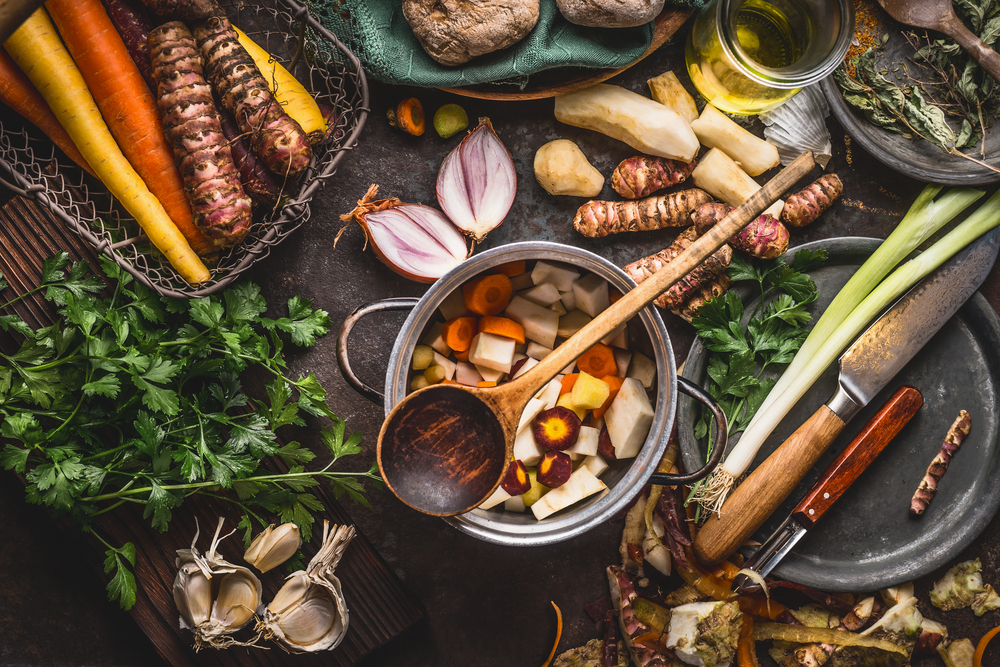Plant Based & Kosher
Welcome to the newest addition to our food section.
by Shoshana Isaacson
UNORTHOBOXED Magazine Food Editor
Being plant based and keeping kosher may seem like a no-brainer but there can be some challenges and bumps along the way. This column aims to alleviate some of those issues by sharing up-to-the-minute plant-based alternatives to traditional Jewish foods from around the world. Whenever possible we will also try to avoid overly processed ingredients and offer simple fresh alternatives or home-made variations.
There are times when eating a plant-based diet can be really difficult. When attending a meal at a family member or friend’s home who doesn’t understand what your diet is all about and thinks you will be fine eating the overcooked green beans and cold soggy salad. Or they make you a huge serving of pasta and think you will be satisfied. In today’s world of diet conscious people you would think this would be a problem of the past. While many people have become more aware of the different types of plant-based diets out there, others are completely thrown for a loop if they are asked to accommodate a guest who adheres to some form of plant-based fare.
Part of the problem is that the phrase “plant based” means different things to different people. In our January 2022 issue we listed a number of different definitions of plant-based diets to try to make this less confusing. If you are attending a meal at someone’s home, speak up for yourself even if your host doesn’t ask about your food restrictions or limitations. No host likes to watch a guest sit at their table with an empty plate. Offer to bring an entrée that could be enjoyed by everyone. Just keep in mind the stricter you are about your personal diet and the more restrictions you have, the harder it may be to find things to eat at an unfamiliar home.
Gatherings with friends and family during the Chanukah season may or may not be challenging, again depending on how strict you are with being plant based. Here are two awesome recipes for a crowd that will please even those diehard meat and potato eaters.
Root Vegetable and Barley Borscht
Makes approximately 8 quarts
By The Out of Town Cook – Shoshana Isaacson
Nothing is more nourishing than a bowl of hearty soup. This one is perfectly paired with latkes of any kind or just a big crusty loaf of challah.
Ingredients
1 or 2 large onions peeled and roughly chopped
2 or more garlic cloves
1 cup diced celery or use celeriac root as one of your root vegetables and then skip the celery stalks
2 cups sliced mushrooms (optional)
4 or 5 carrots, peeled and chopped into coins
6 cups of assorted root vegetables cut into equal size chunks (this will allow them to cook evenly). Include a variety of the following: Potatoes, sweet potatoes, celery root, rutabaga, parsnips, beets, turnips, kohlrabi, and radishes.
Fresh dill weed or 1 tablespoon dried dill
12 cups or more vegetable stock or water
Oil of your choice for sauteing onions and garlic
1 cup of pearl barley
Salt and pepper to taste

Step by Step Instructions
Step 1
In a large soup pot (10 to 12 qt capacity) add a few tablespoons of oil and saute the onion and garlic until it is fragrant, two or three minutes.
Step 2
Add the carrots, celery and mushrooms (if using). Sautee a few more minutes.
Step 3
Put in the remaining 6 cups of cubed root vegetables and then cover the vegetables with vegetable stock or water, up to about 8 qts of liquid. Use more if needed to cover vegetables.
Step 4
Add in the dill and a good grind or two of black pepper.
Step 5
Cover and bring to a boil.
Step 6
Reduce heat and allow soup to simmer covered for about 45 minutes.
Step 7
Add the barley and adjust liquid if needed.
Step 8
Simmer for another 30 or more minutes.
Step 9
Taste and adjust seasoning. The taste will deepen as the soup simmers.
Step 10
Serve with a dollop of plant-based “sour cream” and a side of latkes.
*Note
If you like a darker soup, caramelize your onions before adding them to the soup.
Ingredients
2/3 cup plus 2 tablespoons non-dairy milk
1/2 cup raw sunflower seeds
2 tablespoons plus 2 teaspoons rice vinegar – another vinegar of your choice or lemon juice will alter the flavor slightly but works fine
3/4 teaspoon salt, optional

Step by Step Instructions
Step 1
If not using a high-speed blender (or if you want to maximize your nutritional benefit by sprouting), put your sunflower seeds and non-dairy milk into a container together so that the sunflower seeds can soak and soften to make for easier blending. Soak for at least an hour and a half or up to 12 hours.
Step 2
If not soaking your seeds, or if you have finished soaking, put all ingredients into your blender or food processor.
Step 3
Blend until very smooth and creamy. In a high-speed blender, this can take up to a minute, and it will likely take longer in a standard blender or food processor.
Step 4
If you are using a food processor with a wide bowl, you might need to double the recipe so that the food processor has enough in it to blend well.
Step 5
Serve and enjoy!
